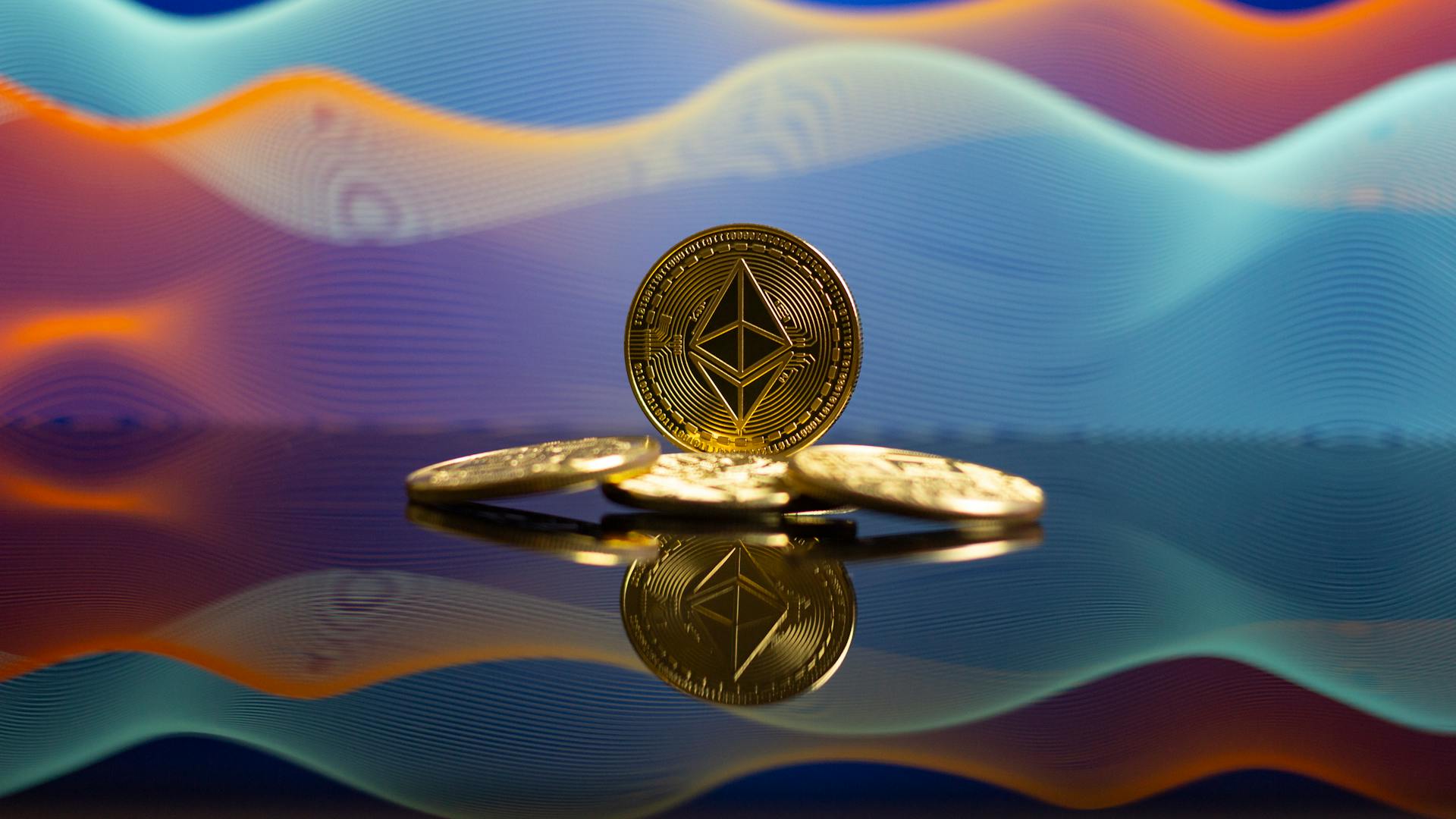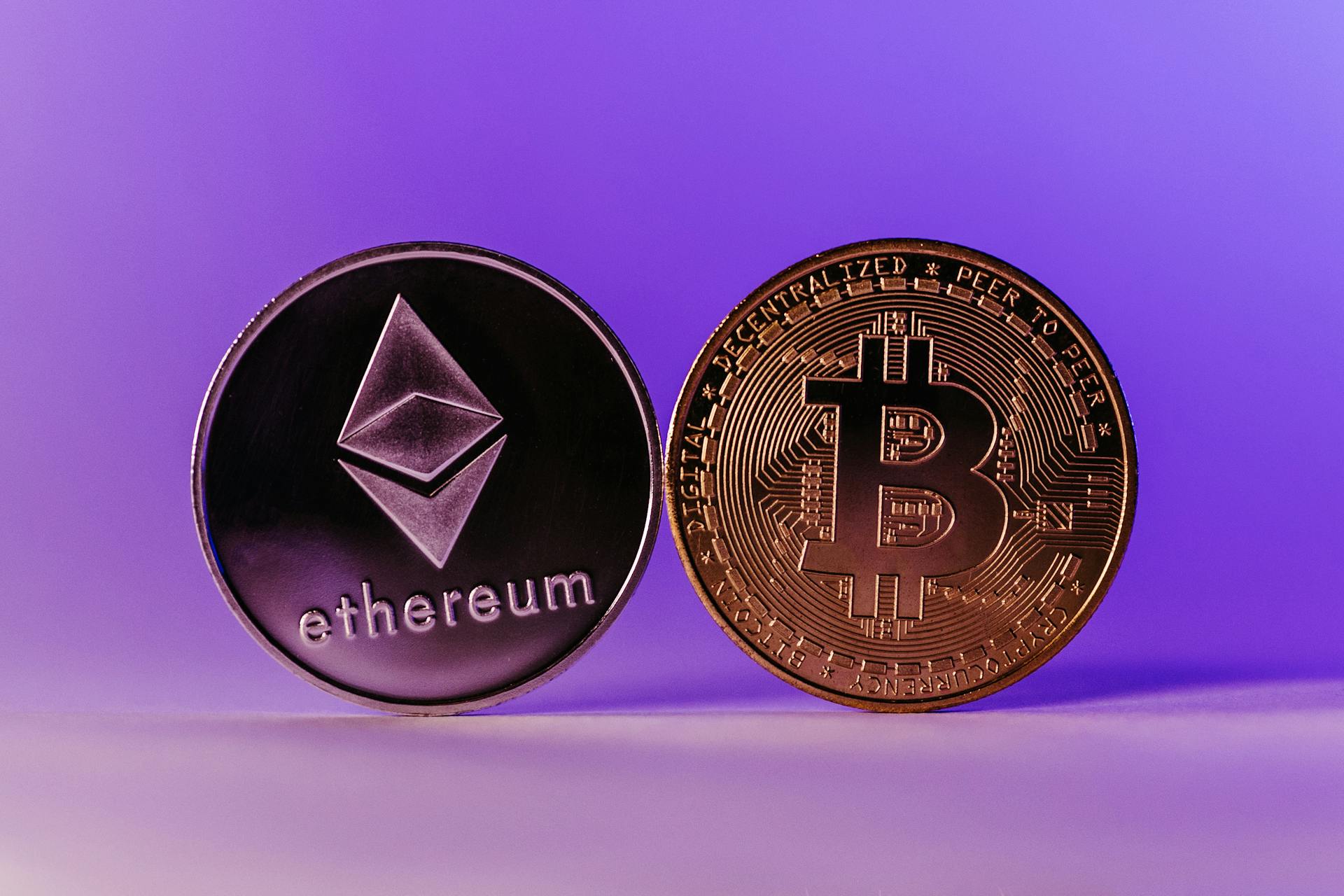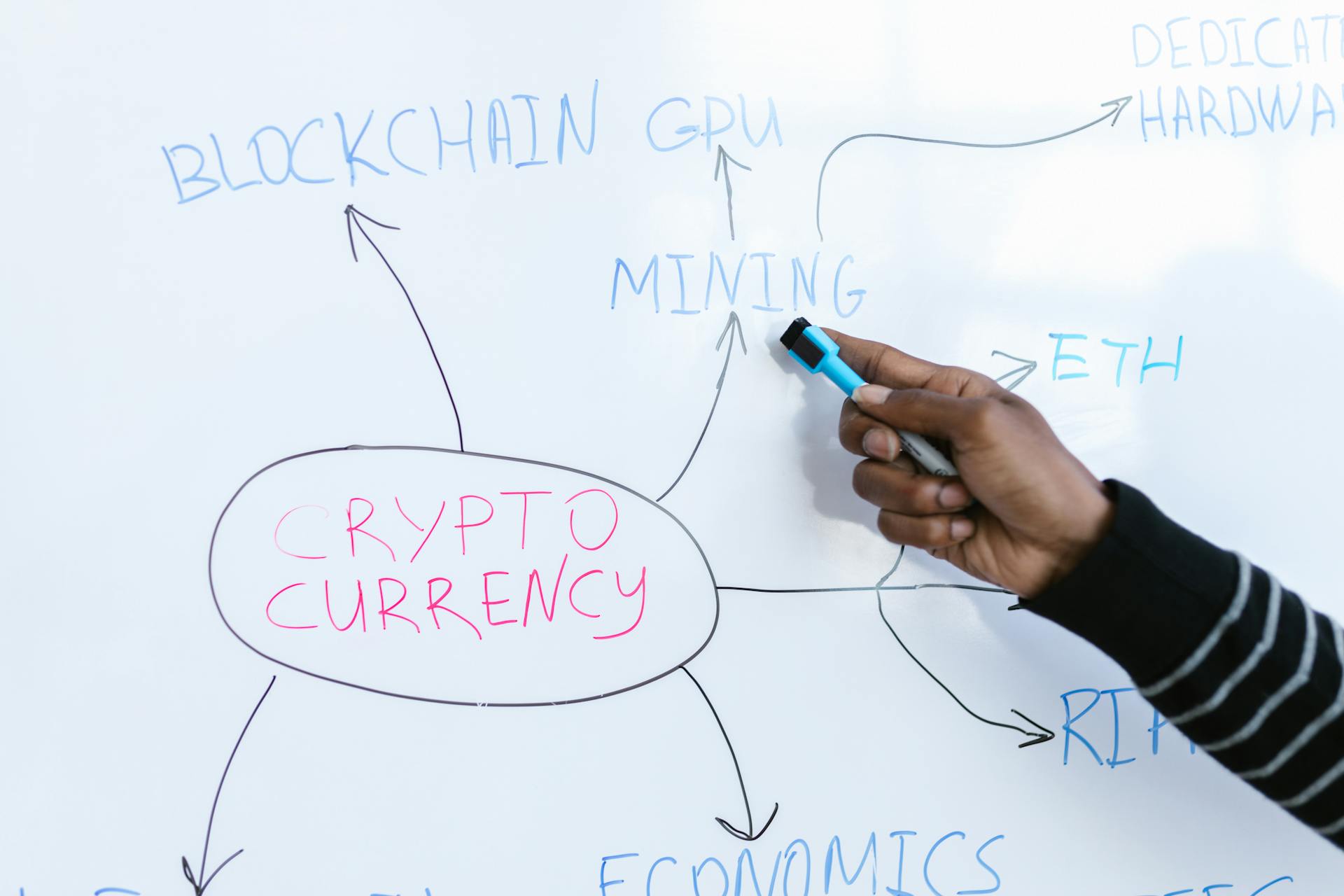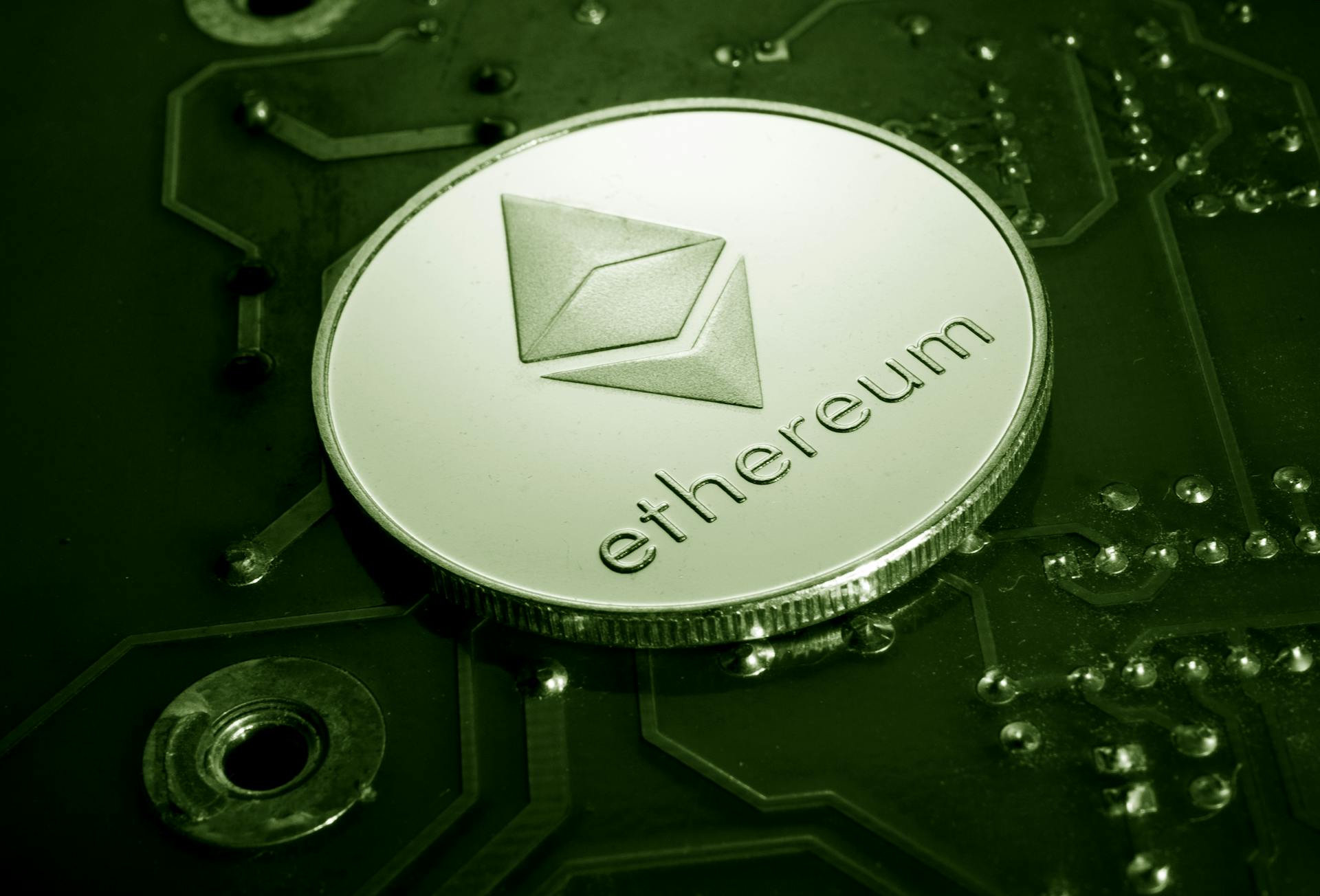
Ethereum DApps are revolutionizing the way we think about decentralized applications, with over 2,000 DApps currently live on the Ethereum network.
Decentralized finance (DeFi) is a key area where Ethereum DApps are making a significant impact, with over $100 billion in total value locked in DeFi protocols.
The rise of non-fungible tokens (NFTs) has also led to the creation of new and innovative DApps, with some NFT marketplaces seeing sales of over $1 million in a single day.
As the Ethereum network continues to grow and improve, we can expect to see even more exciting developments in the world of DApps.
What Are DApps?
DApps are open-source software built on the Ethereum blockchain, allowing developers to create decentralized applications. These apps have no central authority or ownership, and once deployed, even the developers no longer have control over them.
One of the key features of an Ethereum DApp is that it's open-source, meaning the code can be examined and proven free of malicious code. This transparency is crucial for building trust within the community.
Decentralized finance applications thrive on Ethereum due to its decentralized nature. This allows users to have a say in the decision-making process through consensus voting.
Ethereum DApps are incentivized, rewarding users who act as validators of transactions on the blockchain with digital tokens for their activity. This encourages participation and helps maintain the integrity of the network.
A crucial aspect of Ethereum DApps is the protocol, which is the cryptographic algorithm used to show proof of value. Currently, Ethereum uses Proof-of-Stake (PoS), which is agreed upon by the community of application developers and users.
Here are the common features of an Ethereum DApp:
- Open Source: DApps should ideally be open-source software with the code able to be examined and proven free of malicious code.
- Decentralized: Ethereum DApps are built on a decentralized blockchain, and any changes should be determined by the consensus of user votes.
- Incentivized: Users who act as validators of transactions on the blockchain should be provided incentives in the form of digital tokens for their activity.
- Protocol: The community of application developers and users must agree on the cryptographic algorithm used to show proof of value.
Getting Started
To try a new Ethereum dapp, you'll need a wallet and some ETH.
A wallet is your "login" for a dapp, allowing you to connect and access its features.
You'll also need ETH to pay for any transactions or services within the dapp.
ETH is the cryptocurrency used to facilitate interactions on the Ethereum network.
To get started, simply set up a wallet and fund it with some ETH, and you'll be ready to explore the world of new Ethereum dapps.
A unique perspective: Erc 20 Wallet Address
Get Started
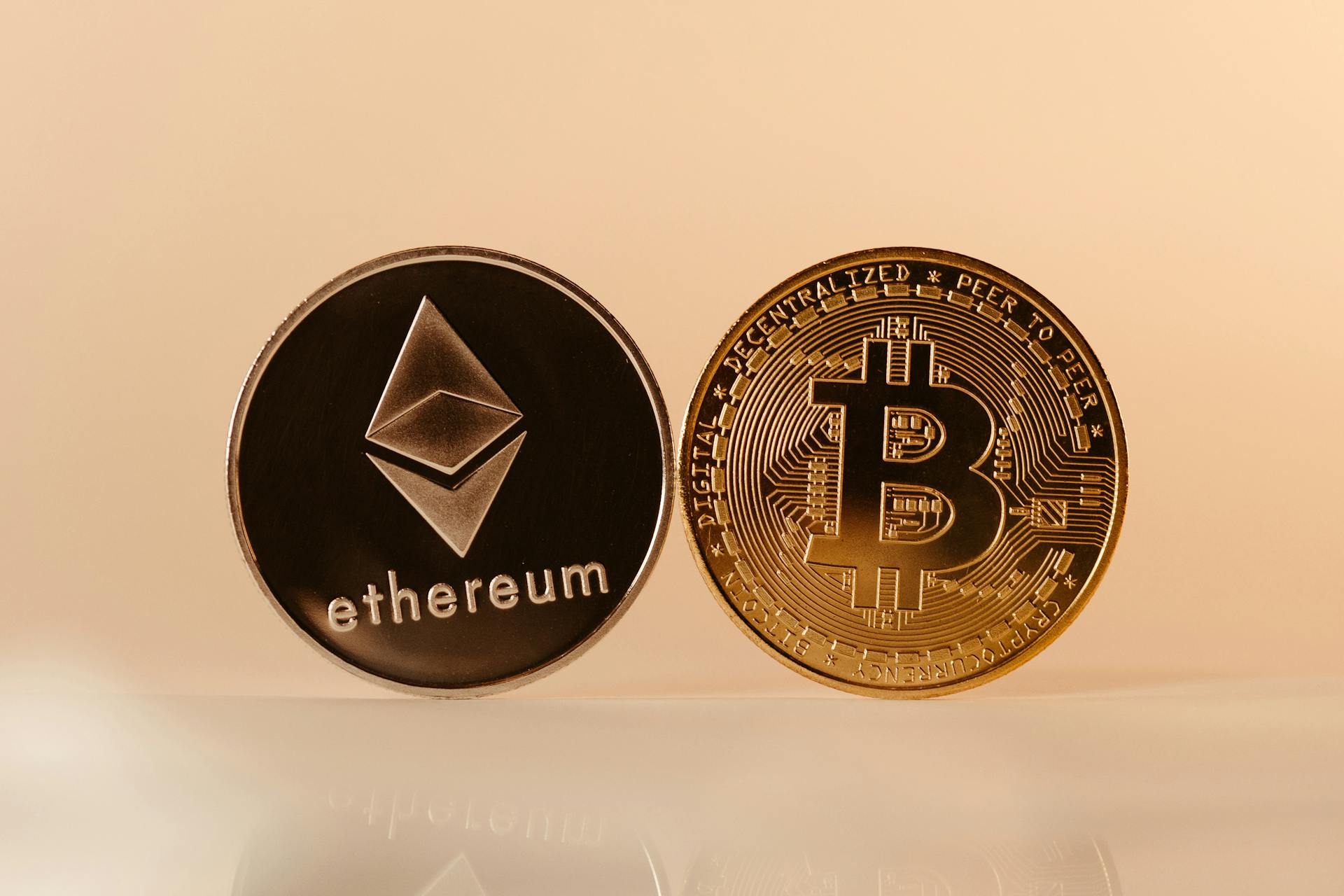
To get started with dapps, you'll need a wallet and some ETH.
A wallet is your "login" for a dapp, allowing you to connect and access various dapp services.
To interact with dapp services, you'll need to have some ETH to pay for any transactions or fees.
You can think of a wallet like a digital bank account, where you store your ETH and use it to make transactions on dapps.
Related reading: How to Get Ethereum Wallet
Installing Dependencies
To get started with building our dApp, we need a few dependencies first. You can think of dependencies as the building blocks of our project, and we need to gather them before we can start constructing.
We need a few dependencies to build our dApp.
You can install dependencies using a package manager like npm or yarn. I've found that npm is a popular choice among developers.
The first dependency we need is a few dependencies first. Seriously, it's a few.
Client-Side Application
To build the client-side application, you'll need to modify the HTML and JavaScript files that came with the Truffle Pet Shop box. We'll use the existing code to get started, and also take note of the Bootstrap framework and lite-server that came with it.
We'll configure web3 inside the "initWeb3" function, which allows our client-side application to talk to the blockchain. This is done using the web3.js library.
To initialize contracts, we'll fetch the deployed instance of the smart contract and assign some values that will allow us to interact with it.
Here are the steps to set up the client-side application:
- Set up web3: Configure web3 inside the "initWeb3" function.
- Initialize contracts: Fetch the deployed instance of the smart contract and assign some values.
- Render function: The render function lays out all the content on the page with data from the smart contract.
To connect to the blockchain, we need to import one of the accounts from Ganache into Metamask. Once connected, we should see all of the contract and account data loaded.
Tools and Services
Ethereum-powered tools and services are a growing movement, disrupting traditional business models and inventing new ones.
Dapp actions cost a transaction fee, so be mindful of your expenses as you explore these innovative applications.
Dapps are modular and can be combined in various ways to create new financial products and services.
New configurations of these modules are constantly emerging, increasing the possibilities for what you can do with your cryptocurrency.
Ethereum Apps, Projects, and Developer Tools offer a wealth of resources for web3 developers and curious learners alike.
DApp Development
The Ethereum network dominates dApp development due to its user-friendly development interface and large developer community.
Ethereum's Ethereum Virtual Machine (EVM) allows developers to launch dApps without worrying about the underlying coding language, making it easier for novice blockchain developers to enter the space.
Developers can use the Truffle Framework to build decentralized applications on the Ethereum blockchain, which provides a suite of tools for writing smart contracts and testing them before deployment.
The Truffle Framework includes tools for testing and deploying smart contracts, as well as a place to develop the client-side application.
Here are the key dependencies for building a dApp on Ethereum:
- Ethereum Virtual Machine (EVM)
- Truffle Framework
- Solidity programming language
- web3.js library for client-side application
These tools and libraries make it possible for developers to quickly launch and refine their dApp projects, driving the rapid development of DeFi products on the Ethereum network.
Types of DApps
DApp development is a vast and exciting field, with a wide range of applications being built on the Ethereum blockchain.
Ethereum Dapps can be categorized into various sectors, including gaming, social media, and finance.
Gaming Dapps are a significant sector, with many applications focused on creating immersive experiences for users.
Social media Dapps are also gaining traction, with some platforms offering unique features such as decentralized identity management.
Finance Dapps are another key sector, with applications focused on providing secure and transparent financial services.
These sectors are not exhaustive, but they give you an idea of the diversity of Dapp development.
What Are Smart Contracts?
Smart contracts are a crucial part of dApp development, and they're essentially a set of rules that live on-chain for all to see and run exactly according to those rules. They're like vending machines that can hold funds and mediate agreements and transactions.
Smart contracts are written in a programming language called Solidity, which looks a lot like Javascript. This language allows us to do many of the same types of things Javascript is capable of, but it behaves a bit differently because of its use case.
Smart contracts are in charge of reading and writing data to the blockchain, as well as executing business logic. They're similar to a microservice on the web, but instead of interacting with a database, they interact with the public ledger of the blockchain.
A smart contract is called "smart" because it represents a covenant or agreement, like the one in our voting dApp that ensures votes are counted fairly and the candidate with the most votes wins the election.
The Virtual Machine
The Ethereum Virtual Machine (EVM) is a unique software system that allows developers to launch any dApp regardless of the underlying coding language.
Developers can work with the ready-made Ethereum system to fast-track onboarding and get their applications up and running sooner than other alternatives.
This dynamic continues to drive the rapid development of DeFi products on the Ethereum network.
The EVM eliminates the need to develop an entirely new blockchain for every dApp, making it easier for novice blockchain developers to enter the space.
Ethereum uses a network-native language known as Solidity for coding smart contracts, which is an integral part of the EVM.
The overall Ethereum development kit, which includes application templates, MetaMask integration, and the EVM, allows companies to focus on refining their applications and developing on top of open-source code.
Truffle Framework
The Truffle Framework is a crucial tool for building decentralized applications on the Ethereum blockchain. It provides a suite of tools that allow us to write smart contracts with the Solidity programming language.
You can install Truffle with NPM in your command line like this, making it a breeze to get started. This is a great example of how Truffle simplifies the development process.
Truffle enables us to test our smart contracts and deploy them to the blockchain, making it an essential part of our development workflow. This is a game-changer for developers who want to build and launch decentralized applications quickly.
With Truffle, we also have a place to develop our client-side application, giving us a comprehensive development environment. This makes it easy to build, test, and deploy our decentralized applications.
You might like: New Us Nickel
Lending/Collateralized Debt
Aave is an open-source, non-custodial protocol to earn interest on deposits and borrow assets, and it's one of the second-largest Ethereum DApps by TVL, with $20.76 billion in August 2024.
Lending protocols enable users to lend and borrow cryptocurrencies in a decentralized manner, typically without intermediaries. Users can deposit their assets into liquidity pools and earn interest, while borrowers can access these funds by providing collateral.
Compound is another example of a lending protocol, similar to Aave. Both protocols allow users to lend and borrow cryptocurrencies, promoting a trustless financial ecosystem.
Collateralized Debt Position (CDP) protocols, on the other hand, allow users to lock up their crypto assets as collateral to mint stablecoins or other synthetic assets. MakerDAO is a well-known CDP protocol where users lock up ETH to mint the stablecoin DAI.
The collateral must exceed the value of the minted assets to ensure solvency, and if the collateral's value drops too much, the position can be liquidated to maintain the system's stability.
Explore further: New and Upcoming Cryptocurrencies
Liquid Staking
Liquid Staking is a game-changer in the world of DeFi, allowing holders to earn staking rewards while keeping their tokens liquid.
Readers also liked: On Chain Staking Ethereum Yield
Liquid staking tokens are derivatives of staked Ether that accrue staking rewards, making them a great option for those who want to participate in staking without locking up their tokens.
EigenLayer pioneered Restaking, which leverages staking Ether to earn additional staking rewards over staked Ethereum.
By using a restaking layer like EigenLayer, users can earn rewards from both the Ethereum Staking Layer and the Restaking Layer.
Liquid Restaking takes this concept a step further by minting a liquid token to represent a user's deposit in a restaking layer, allowing for even more flexibility and earning potential.
Discover more: Ethereum Layer 2
Client-Side Voting
Client-Side Voting is a crucial aspect of DApp development, and it's surprisingly easy to implement. We create a form with an empty select element in our "index.html" file, which we'll populate with candidates provided by our smart contract in our "app.js" file.
The form has an "onSubmit" handler that calls the "castVote" function, which we'll define in our "app.js" file. We'll use this function to record the user's vote in the smart contract.
To handle the form submission, we query for the candidateId in the form and pass it to the vote function from our smart contract, along with the current account's metadata. This will trigger a Metamask confirmation popup, where the user can confirm their vote.
Once the vote is recorded, we'll show the content to the user again. For now, we'll have to refresh the page to see the votes recorded, but we'll implement the functionality to update the loader automatically in the next section.
Here's a step-by-step breakdown of the process:
- Create a form with an empty select element in "index.html" to populate with candidates from the smart contract.
- Define the "castVote" function in "app.js" to handle form submission.
- Query for the candidateId in the form and pass it to the vote function from the smart contract.
- Show a loader and hide the page content during the voting process.
- Refresh the page to see the recorded votes (for now).
Frequently Asked Questions
How many dApps are built on Ethereum?
Ethereum currently powers over 4,000 decentralized applications (dApps). This vast ecosystem is a testament to Ethereum's leading position in the smart contract blockchain space.
Featured Images: pexels.com
